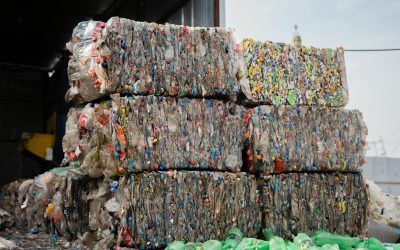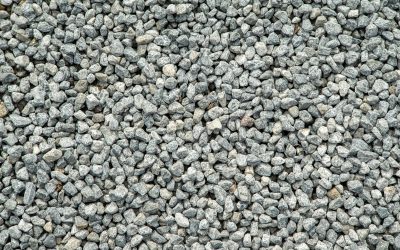What Is E-Waste?
Electronic waste, often referred to as e-waste, refers to discarded electronic devices as well as components and materials associated with these devices. Because of the quick introduction of new electronics to the global market, many people discard electronic devices after only a few years of use. The most significant sources of e-waste include consumer products such as:
- Computers
- Speakers
- Mobile phones
- Televisions
- Music players
- Keyboards and other computer peripherals
- Home appliances
The U.S. is the world leader in producing electronic waste, followed closely by China.
Electronic waste is an increasing segment of the larger waste stream, and safely processing this waste is essential to human health, the environment, and even the economy. However, processing e-waste effectively poses significant challenges for recyclers and materials recovery facilities (MRFs).
In this blog, we share projections for the future of e-waste, how it may impact the environment, and change the global economy.
E-Waste Growth Projections
There are growing economic benefits of employing a circular economic model for e-waste. According to recent projections, more than 50 million tons of e-waste are discarded each year. Of this waste, only about 20% is recycled.
Every year, the amount of electronics that are discarded grows by 2.5 million tons. E-waste production is expected to grow exponentially in the coming years. By 2030, the e-waste industry is expected to grow to nearly 75 million tons, more than doubling the amount of waste currently produced annually. This growth will likely be attributed to more individuals purchasing products with shorter life cycles and fewer repair options for older electronics.
The Health & Environmental Impacts of E-Waste
Electronic products can help improve living standards worldwide by providing information, communication, and educational opportunities. However, the growing global demand for electronics quickly outpaces the industry’s capacity to dispose of or recycle outdated products safely.
Electronic devices are typically not biodegradable and will not break down naturally or safely when discarded in landfills. Discarded e-waste often piles up in the environment, contaminating habitats and leaching chemicals that are harmful to people, animals, and plants. Further, when e-waste is exposed to extreme heat, harmful chemicals are released into the air. The release of pollutants and toxic chemicals is one of the biggest environmental challenges associated with electronic waste management.
Screen e-waste more efficiently.
Challenges of E-Waste Screening
Recycling or otherwise breaking down electronic waste is a challenge for MRFs. There are several reasons why e-waste is difficult to process.
Product Complexity
The product complexity of many types of e-waste makes efficient material separation and sorting difficult.
Electronics are made up of multiple materials, including:
- Glass
- Various plastics
- Ferrous and non-ferrous materials
To process e-waste, recyclers must sort the smaller components electronics are composed of and avoid mixing different materials. There are multiple steps in this process, which can include:
- Dismantling electronics to remove batteries and other hazardous waste.
- Shredding or crushing the remaining electronic components into smaller sizes.
- Separating fine materials, like small plastic or glass pieces, from larger scrap metals.
- Sorting the metals into various types, e.g. separating ferrous from non-ferrous.
- Removing glass fines from plastics fines.
Because electronics are increasingly complex, each of these stages is resource-intensive. Some stages, like dismantling, require human labor to complete. Other stages, like the separation of fines, are accomplished using material screening equipment.
Process Efficiency
Another inherent problem with the e-waste separation process becomes obvious: efficiency. With the increased production of consumer electronics, e-waste generation continues to rise. As a result, MRFs must continually adapt to increased production demands.
Processing outputs must increase to match demand, and cost-efficient processes must be developed to decrease the cost of sorting e-waste. Sorting and screening solutions must be able to handle large volumes of waste and do so with minimal downtime.
Further, because the global market for electronics constantly shifts, equipment that can minimize recycling production costs is vital.
Material Contamination
High product complexity and inefficient screening lead to an obvious e-waste issue: contamination. While the global generation of e-waste is on the rise, many of the world’s largest buyers of recyclable materials are tightening their regulations.
Higher thresholds for material purity are being established, placing a heavier burden on MRFs to produce a cleaner product. This means less material mixing and more stringent processing.
Solutions are needed that offer the capabilities of high volume processing coupled with an equally high degree of e-waste screening efficiency. Many traditional technologies are incapable of meeting these requirements.
Related Article:
Three Ways MRFs can Reduce Material Contamination
Lack of Uniform Regulations
A critical hurdle in addressing the e-waste challenge lies in the absence of uniform international regulations. Varying policies and standards across different regions make it challenging for industries to establish standardized recycling practices. The lack of a cohesive global approach hampers the efficient management of e-waste, as different jurisdictions grapple with diverse compliance requirements.
Limited Infrastructure and Awareness
Despite the escalating volume of e-waste, the infrastructure for its proper recycling remains inadequate on a global scale. Many regions lack dedicated facilities equipped to handle the complexities of e-waste, leading to improper disposal methods, such as landfilling or incineration.
Additionally, there’s a lack of awareness among consumers regarding the importance of responsible e-waste disposal.
AEI’s E-waste Screening Solutions
Aggregates Equipment, Inc. is a leader in e-waste and scrap metals screening. We custom engineer screening equipment to meet the demands of today’s waste industry.
Our BIVITEC flip flow screen uses a dual vibratory principle to efficiently sort metallic or plastic fines. The BIVITEC’s polyurethane screen panels are durable and resistant to plugging and blinding. Meanwhile, AEI’s Freedom Disc Screen utilized HARDOX discs to efficiently size larger fines, without the downtime of trommels or other traditional screening equipment.
Contact our sales team for more information about our e-waste screening equipment or request a quote to get started today!
FAQ
Why is E-Waste Recycling more Complicated than Other Types of Recycling?
Unlike materials like cardboard or plastic, electronic devices are made from a mix of metals, plastics, glass, and chemicals—often layered together. Efficient separation and safe handling require specialized equipment and processes.
How does E-Waste Harm the Environment?
Improperly disposed e-waste can leach toxic chemicals into soil and water, pollute air through burning, and release greenhouse gases. It can also harm ecosystems and contaminate local food and water supplies.
How can Screening Technology Improve E-Waste Recycling?
High-performance screening equipment can:
- Reduce clogs and downtime when separating sticky or fine particles
- Improve material purity by separating valuable metals from contaminants
- Increase throughput and efficiency in the recycling process


